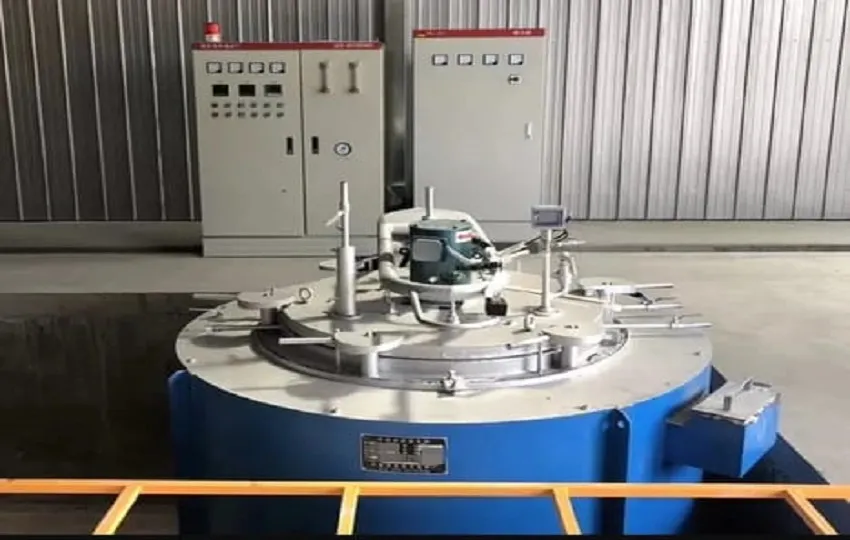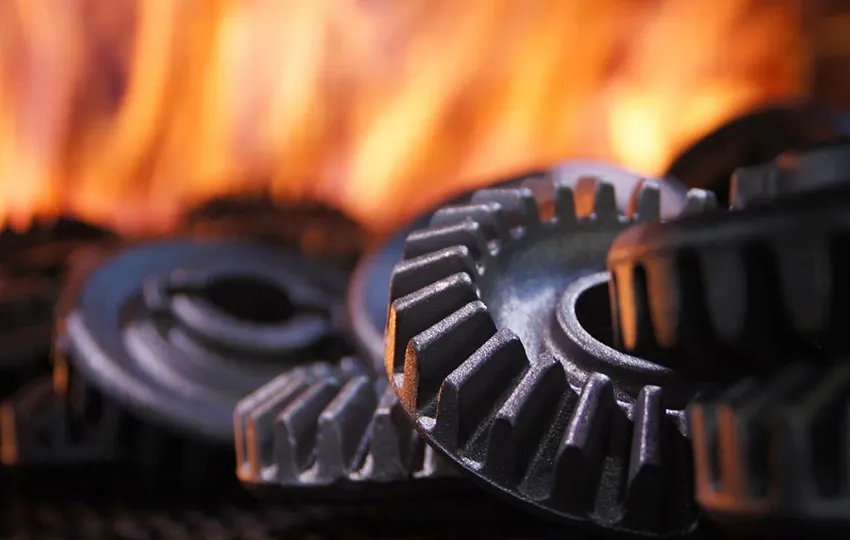
What is Gas Nitriding?
Gas nitriding is a highly effective thermochemical heat treatment process that enhances the performance of steel components by increasing surface hardness, wear resistance, and corrosion protection. This advanced technology is widely utilized in industries such as automotive, aerospace, and tooling to extend the longevity and reliability of precision-engineered parts
How Gas Nitriding Works
This process involves heating ferrous materials to temperatures between 500°C and 580°C in an ammonia-rich atmosphere. Ammonia (NH3) decomposes at high temperatures, releasing atomic nitrogen, which then diffuses into the steel surface to form hard nitrides with alloying elements such as chromium, molybdenum, and vanadium.
Key Benefits of Gas Nitriding
-
Superior Surface Hardness:
The formation of nitrides significantly enhances the hardness of the component, reducing wear and tear.
-
Increased Fatigue Strength:
The process induces compressive residual stresses, improving the material's resistance to cyclic loading.
-
Enhanced Corrosion Resistance:
Gas nitriding imparts natural corrosion resistance, minimizing the need for additional coatings.
-
Minimal Distortion:
The low processing temperatures reduce the risk of warping, making it ideal for precision components.
-
Customizable Case Depth:
The process parameters can be tailored to achieve specific case depths suitable for different applications.
Key Advantages of Gas Nitriding
Recent Post
The Future of Gas Nitriding
With the growing emphasis on efficiency and sustainability, gas nitriding continues to evolve with advancements such as:
- Plasma-Assisted Nitriding:
A cutting-edge technique improving precision and repeatability.
- AI-Driven Process Control:
Smart monitoring systems ensuring optimal treatment conditions.
- Eco-Friendly Nitriding Solutions:
Innovations aimed at reducing environmental impact while maintaining superior performance.
The White Layer: A Critical Aspect
A key characteristic of gas nitriding is the formation of a white layer (compound layer) on the surface, consisting of γ' (gamma prime) and ε (epsilon) iron nitrides. This layer plays a crucial role in improving surface properties but must be carefully controlled to optimize performance.
For example, in applications such as gears and shafts, achieving a uniform white layer of approximately 12 microns with a porous layer of 4-5 microns enhances durability without compromising fatigue strength. Precision control over parameters like ammonia dissociation rates and gas flow ensures consistent, high-quality results.
Industries That Benefit from Gas Nitriding
Gas nitriding is extensively used across multiple industries where durability, wear resistance, and load-bearing capacity are crucial. Some common applications include:
- Automotive Industry :
Gears, camshafts, rocker arm shafts, and crankshafts benefit from increased surface hardness and fatigue strength
- Aerospace Sector
Landing gear components and turbine engine parts require nitriding for superior performance under extreme conditions.
- Tooling and Die Manufacturing:
Dies, punches, and molds demand high wear resistance to ensure prolonged service life and accuracy.
- Heavy Machinery and Industrial Equipment:
Hydraulic cylinder rods and industrial rollers leverage nitriding to enhance longevity and efficiency.
Why Choose Our Gas Nitriding Services?
At Sourabh Group, we specialize in state-of-the-art gas nitriding solutions, ensuring your components achieve maximum durability, performance, and reliability. With our expertise, advanced technology, and commitment to quality, we help businesses stay ahead of the competition
Contact us today to learn more about how gas nitriding can enhance your products and improve overall efficiency!



